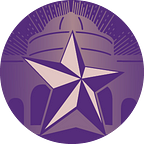Beyond Tang and Teflon
From satellites to water filters, to scratch-resistant eyeglass lenses, the space program is present throughout our lives. Technology developed for NASA missions has not only served astronauts and space exploration, but we stargazers on the ground, too. We frequently use many items produced specifically for work in space. Take cordless vacuums, like the Dustbuster. It was originally designed to pick up moon rocks. Or memory foam, which you may find in your pillow or mattress at home. NASA first developed it to make spacecraft seats more safe and comfortable.
Hundreds of items that were the product of research and development for NASA missions now have a familiar place in our homes, cars and workplaces. Without the space race, we might not have bulletproof vests, solar-powered vaccine refrigerators, invisible braces or ear thermometers. But we’d still have Tang.
That’s right — contrary to popular belief, Tang predates the modern space program. It hit store shelves in 1959, three years before astronaut John Glenn made it famous by drinking it while orbiting Earth. The same goes for cordless power tools, Velcro, Teflon and smoke detectors. These were inventions that were popularized by their use in space, or debuted to consumers around the same time that the space race was picking up speed.
One literally life-saving development fostered by NASA research has strong ties to Texas. Heart surgeon and medical pioneer Michael DeBakey of the Baylor College of Medicine made great strides in the field of cardiovascular medicine and taught generations of doctors.
Along with NASA, Dr. George Moon and MicroMed Technology, Inc., DeBakey created a pump for patients awaiting heart transplants. During the development of this “bridge to transplant” pump, some critical questions arose. NASA researchers looked to a rocket engine for answers — and found them. While fluid flows faster through an engine, it’s remarkably similar to how blood moves throughout the human body. This knowledge led to the development of the MicroMed DeBakey VAD which was first successfully implanted into a patient in 1998. Since then, it has been implanted in over 445 ill patients anxiously awaiting a heart transplant.
While NASA technology helps keep us alive and well on the ground, many of the innovations created to keep astronauts safe in space are beneficial to us, too. The Apollo program’s spacesuits needed to fulfill multiple requirements. They had to be lightweight so that astronauts performing work on the Moon’s surface could move around. They also had to help regulate an astronaut’s body temperature and biological systems. Most importantly, space suits had to protect astronauts from the conditions of space. Their helmets — pressurized glass bubbles — helped to protect their heads, though the Apollo 7 astronauts refused to wear theirs during re-entry. Suffering from head colds, the astronauts worried that wearing their helmets would prevent them from blowing their noses.
In addition to these advances to our health and safety, NASA technology inspires improvements to our everyday lives and the things that define our culture. Not all of NASA’s research is turned into a spin-off by corporations. Some technologies, deemed “successes,” are not released to the public, though they still benefit us greatly. One such technology that NASA developed involves restoring artwork after fire damage.
A more recent partnership between NASA and the US Forest Service helps on-the-ground incident managers to analyze wildfire behavior and detect hot spots, active fires and post-fire conditions. Technology like this may help to prevent or mitigate future wildfire disasters, a common threat throughout the American west.
Most importantly, it’s the spirit of innovation fostered by NASA and the space program that has had the greatest impact on us today. As humans continue to explore farther than we ever have before, we’re pushing our brains and creativity to produce solutions to our daily problems, and our most extraordinary quandaries.
We sent twelve men to the moon while the majority of Americans were still using rotary dial phones. Today, we have computers in our pockets in the form of iPhones and Androids that have more computing power than NASA used during the entire Apollo program. Where will that technology send our explorers next?
